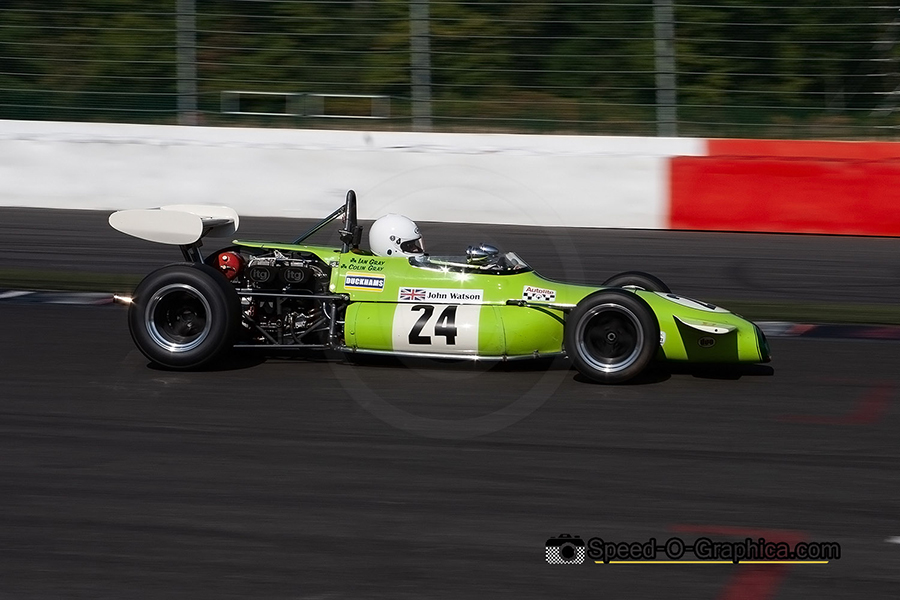Formula 3: The Origins, 1971-1984 Part 3

By Marcel Hundscheid / Speed-O-Graphica
In our third part of our retrospective story on the origins of Formula 3, we take a closer look at Brabham.
British racing car manufacturer Brabham was founded in 1960 by Jack Brabham and Ron Tauranac. The manufacturer produced a range of customer cars alongside works Formula 1 and Formula 2 cars, including cars for Formula 3 competition.
Although we will focus on the period between 1971 and 1984, Brabham had already built their first F3 car in 1965, the Brabham BT9. The BT9 resembled the BT6 used in Formula Junior. While it scored several victories across Europe, the BT6 was no match for the Cooper T72.
In 1965 the BT15 was introduced and went on to win 42 major races. Between 1965 and 1966 58 BT15s were built, also claiming some 42 victories. The car had the same space frame and dimensions as the BT16 from 1965 and the Formula Librae BT14, and was initially powered by a Cosworth SCA, BRM or Holbay MAE engine. Later in 1965 Brabham used a Honda RA300E engine.

Brabham BT7 – James King / Spa Six Hours 2014
In 1966 the BT18 appeared, a car that was made available in different versions and used in both Formula 2 and Formula 3 competition. The Brabham factory team entered two cars with revised Honda RA302E engines in Formula 2, known as BT18A. For the Honda Racing School, six cars were equipped with Ford Kent engines, known as Brabham BT18B. A total of 32 cars were built in F3 specification.
The BT21 followed in 1967, initially developed for open-wheel racing, although most of them were manufactured for racing in F3. From the outside the BT21 had a flatter chassis and new sleeker bodywork than the earlier BT18. Besides this Brabham used a revised suspension, as well as Cosworth MAE and Holbay 997 cc engines. Some cars were produced for US Formula B and designated B21B. Cars that ran under Formula Libre designation were known as 21C. A total of fifty BT21s were built.

Brabham BT21 – Nigel Miller / Spa Six Hours 2010
Brabham introduced the BT28 in 1969, their ultimate design as the 1-litre Formula 3 era ran until the end of 1970. Compared to the BT21, the BT28 had better aerodynamics thanks to a revised body, Cosworth engine and Hewland gearbox. The BT28 continued into 1970 and won many races. Despite a strong rivalry with the Lotus 59, the BT28 claimed 23 victories in 1970. In the end Brabham sold 42 cars.
Next in line was the Brabham BT35, built in 1981 for racing in Formula Atlantic, Formula B and Formula 3. The BT35 was developed from the earlier BT28 and BT29, although the latter was only used in Formula Atlantic. It was followed by the BT38 from 1972, which was based on the BT36 (Formula 2). The BT38 was Brabham’s first production monocoque instead of a space frame used on the earlier cars, designed by Geoff Ferris. In Formula 2 the car was designated BT38, BT38B for Formula B and BT38C for Formula 3.
Brabham’s final customer F3 car was the somewhat disappointing BT41. Geoff Ferris designed the BT41, which was very similar to the BT40 used in Formula 2. The tub was almost identical, although the BT41 had an inner mild steel skin.
List of Brabham F3-cars:
- 1965 BT9
- 1965 BT15
- 1966 BT16
- 1966 BT18
- 1967 BT21
- 1969 BT28
- 1971 BT35
- 1972 BT38C
- 1973 BT41
In the next episode we continue our story about the origins of Formula 3 with Chevron.

Brabham BT38C – Sami Hamid / Historic Grand Prix Zandvoort 2017
